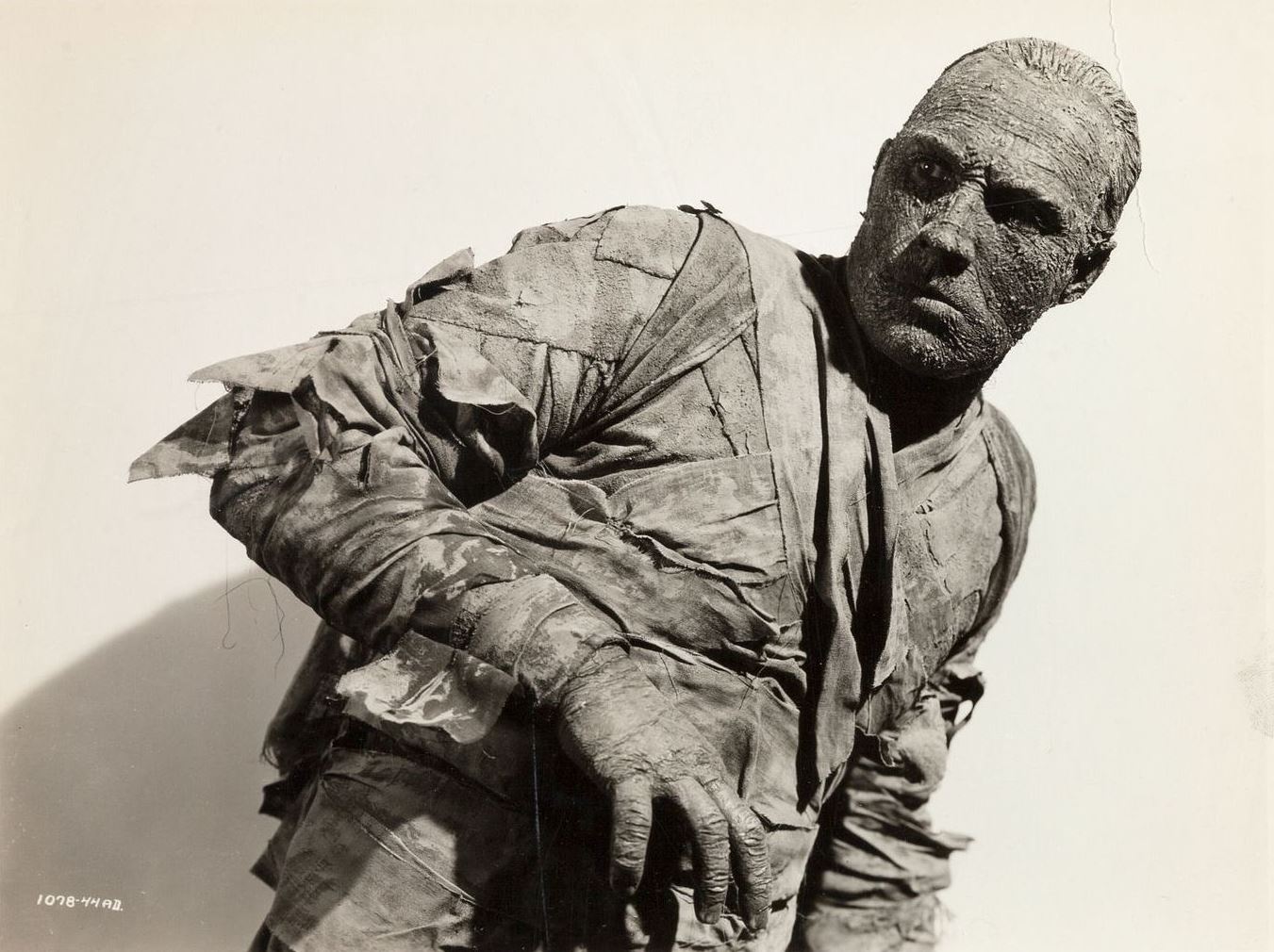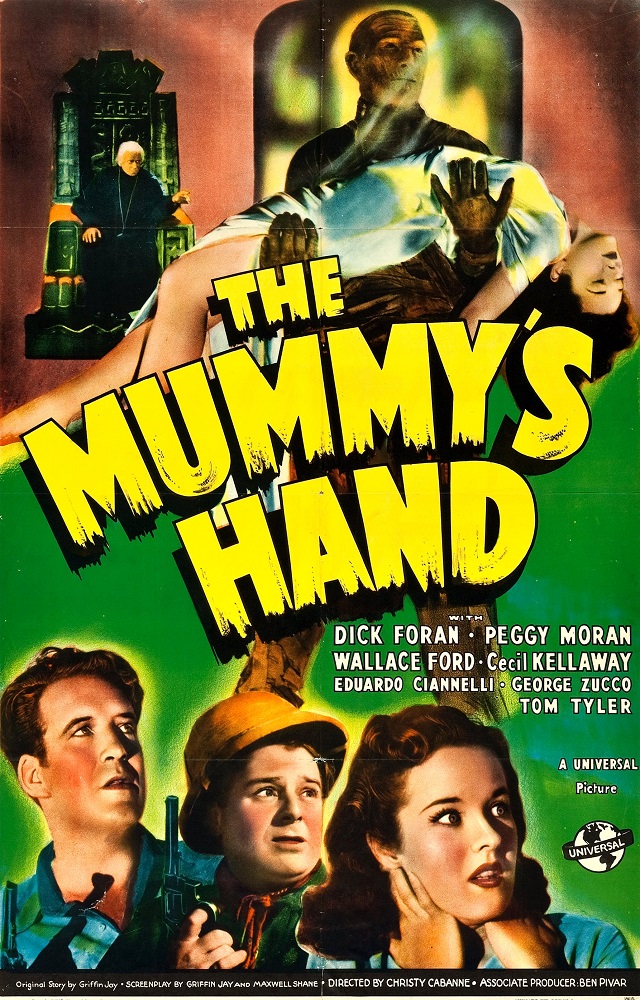Crew
Director – Christy Cabanne, Screenplay – Griffin Jay & Maxwell Shane, Story – Griffin Jay, Producer – Ben Pivar, Photography (b&w) – Elwood Bredell, Music Director – H.J. Salter, Art Direction – Jack Otterson. Production Company – Universal.
Cast
Dick Foran (Steve Banning), Wallace Ford (Babe Jenson), Cecil Kelloway (The Great Solvani), George Zucco (Professor Andoheb), Peggy Moran (Marta Solvani), Tom Tyler (Kharis), Charles Trowbridge (Dr Petrie), Eduardo Cianelli (The High Priest), Siegfried Arno (Beggar)
Plot
Would-be archaeologist Steve Banning is stranded in Egypt with his friend Babe Jenson. In a bazaar, Steve finds a broken vase, which he believes holds a map to the lost tomb of the Princess Ananka, and spends the last of their money to buy it. They then meet the stage magician Solvani in a bar and convince him to fund an expedition. The expedition is opposed by museum curator Professor Andoheb. Andoheb is really a priest of the cult of Karnak and tries to convince them the vase is worthless, while telling Solvani’s daughter that they are fraudsters. The expedition goes ahead and they uncover the tomb of the mummy Kharis. Kharis was Ananka’s secret lover and had his tongue torn out and was buried alive after he was discovered with her. Andoheb takes the step of raising Kharis back to life using the sacred tana leaves and then sending him to kill the interlopers.
The Mummy’s Hand was the first of four sequels Universal made to their classic The Mummy (1932). (See bottom of page for the other sequels). It is interesting when one considers the clichés of the Mummy Film that became a staple of the Universal sequels and other later imitators – the slowly shuffling, bandage-enwrapped title figure, tana leaves, reincarnated princesses, mummification as punishment for forbidden love, Ancient Egyptian cults – it is here, rather than The Mummy, that they began.
The Mummy is an often subtle romantic film about possession and only features the stumbling title figure in one scene. It was the sequels rather than the original that created the template for the cliches of the genre. And it is this story, The Mummy’s Hand, that the rest of the sequels take themselves from – the continuing character of Kharis, for example, does not appear in The Mummy and The Mummy‘s character of Imhotep does not appear in any of the other Universal sequels.
The subsequent Mummy sequels are dull and formulaic, more of the conveyor belt classic monster sequels that Universal churned out during the 1940s. Among these, The Mummy’s Hand is modestly effective, if never particularly great. The elements of the mummy genre pulp in the flashbacks to Ancient Egypt – forbidden love, ritual ceremonies, the mummy’s tongue being torn out – are wielded into an effectively fervid atmosphere.

The film also makes good use of the California Egyptian locations. The scenes leading up to the expedition have a likable snappiness to them – Wallace Ford’s comedy relief is irritating but George Zucco maintains a smoothly sinister presence. Best of all is Cecil Kellaway (billed as Cecil Kelloway)’s rolypoly stage magician, he having some charming moments pulling tricks while drunk. Peggy Moran’s peppery determination also registers well.
The mummy when risen (played by former stuntman and serial and B Western star Tom Tyler) also maintains a sinister effect, where Tyler has been shot in sinister closeup with blacked-out eyes. Indeed, the character of the mummy maintains much more threat in these scenes than the stumbling creature in all the other sequels put together. Combined, all of this gives the film a snappiness and appeal that the sequels lack.
The subsequent Mummy sequels were:– The Mummy’s Tomb (1942), The Mummy’s Ghost (1944), The Mummy’s Curse (1944) and Abbott and Costello Meet the Mummy (1955).
Director Christy Cabanne was a prolific director between the 1910s and 1940s after staring out as an assistant to D.W. Griffith. His only other works of genre note are the Old Dark House film One Darkened Night (1935) and Scared to Death (1947) with Bela Lugosi as a sinister hypnotist.


